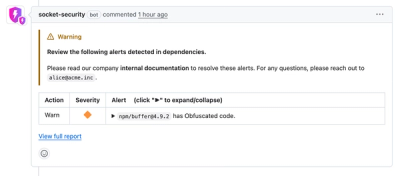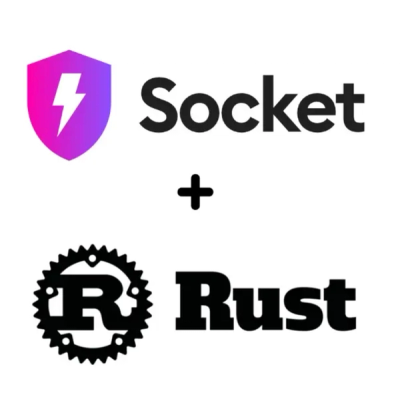
Security News
Crates.io Users Targeted by Phishing Emails
The Rust Security Response WG is warning of phishing emails from rustfoundation.dev targeting crates.io users.
ember-fastboot-server
Advanced tools
The Ember FastBoot Server is used to render Ember.js applications on the server and deliver them to clients over HTTP. This server is meant to be run in a production environment.
For more information about FastBoot, see www.ember-fastboot.com, the Ember CLI addon that's a prerequisite for developing FastBoot apps.
The FastBoot server requires Node 0.12 or later.
The FastBoot server supports two modes of usage:
In both cases, you will first need to build your Ember application, which packages it up for using in both the browser and in Node.js.
To get your Ember.js application ready to both run in your user's browsers and run inside the FastBoot environment, run the Ember CLI build command:
$ ember build --environment production
(You will need to have already set up the Ember CLI FastBoot addon. For more information, see the FastBoot quickstart.)
Once this is done, you will have a dist directory that contains the
multi-environment build of your app. Upload this file to your FastBoot
server.
You can start a simple HTTP server that responds to incoming requests by
rendering your Ember.js application using the ember-fastboot command:
$ ember-fastboot path/to/dist --port 80
Alternatively, you can integrate the FastBoot server into an existing
Node.js application by constructing a FastBootServer and using it as a
middleware.
var server = new FastBootServer({
distPath: 'path/to/dist'
});
var app = express();
app.get('/*', server.middleware());
var listener = app.listen(process.env.PORT || 3000, function() {
var host = listener.address().address;
var port = listener.address().port;
console.log('FastBoot running at http://' + host + ":" + port);
});
You can also serve Ember's static assets (compiled JavaScript and CSS files) or public files (like images or fonts) without using a CDN by adding extra routes:
app.use('/assets', express.static('dist/assets'));
app.use('/images', express.static('dist/images'));
app.use('/fonts', express.static('dist/fonts'));
app.get('/*', server.middleware());
0.7.3
package.json. This allows turning the storeConfigInMeta back on
for FastBoot apps.document.title is deprecated. Use the
ember-cli-head addon
instead.FAQs
Production server for running Ember applications using FastBoot
The npm package ember-fastboot-server receives a total of 22 weekly downloads. As such, ember-fastboot-server popularity was classified as not popular.
We found that ember-fastboot-server demonstrated a not healthy version release cadence and project activity because the last version was released a year ago. It has 2 open source maintainers collaborating on the project.
Did you know?

Socket for GitHub automatically highlights issues in each pull request and monitors the health of all your open source dependencies. Discover the contents of your packages and block harmful activity before you install or update your dependencies.

Security News
The Rust Security Response WG is warning of phishing emails from rustfoundation.dev targeting crates.io users.

Product
Socket now lets you customize pull request alert headers, helping security teams share clear guidance right in PRs to speed reviews and reduce back-and-forth.

Product
Socket's Rust support is moving to Beta: all users can scan Cargo projects and generate SBOMs, including Cargo.toml-only crates, with Rust-aware supply chain checks.